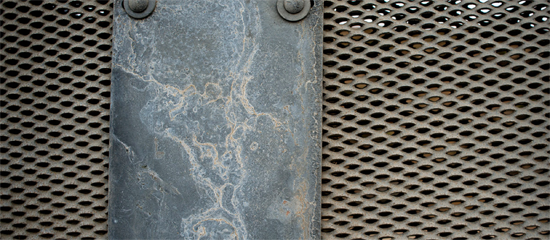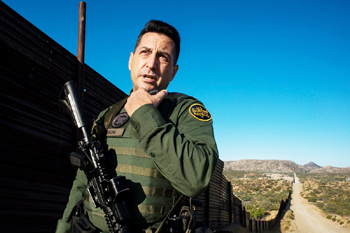
The lower section of secondary fencing, shown here on Aug. 16, 2017, is made of thickened sheets of metal with small holes. These sections are spotted with patches because migrants often cut through the metal to get into the U.S. /Brandon Quester/inewsource
Decades-long struggle to secure U.S.-Mexico Border
By Jean Guerrero | KPBS and Leonardo Castañeda | inewsource
Before President Donald Trump’s promises of an “impenetrable” wall at the U.S.-Mexico border, there was America’s wall.
As it stands today, the wall is imperfect. It is a hodgepodge of steel gates, concrete pillars, hip-high vehicle barricades and other materials. It is marred with cuts and patches; bypassed beneath by tunnels and overhead by drug-delivering catapults and drones; interrupted by long stretches of desert where thousands of people have died trying to enter the U.S. illegally on foot; and cradled on the east and the west by vast expanses of water where people swim, scuba dive and sail around the border.
It’s also new. Almost 90 percent of what is there today was built in the past 12 years under Republican President George W. Bush and Democratic President Barack Obama, based on an analysis by KPBS and inewsource using newly released data.
Trump plans to begin his wall by removing and replacing 14 miles of fencing in San Diego, beginning at the coast, according to the U.S. Customs and Border Protection. So far, the administration has secured $102 million for that replacement project, but if the president can get more funding he aims to lengthen America’s wall.
The goal of building walls and fences at the U.S.-Mexico border has always been to curtail illegal immigration and drug trafficking. So, has the wall done its job? Will a new one do it better?

This border wall that stretches from California through Texas has been covered exhaustively by media the world over. But in this story of America’s wall, a collaboration of KPBS and inewsource, we were able to demonstrate with data what has previously been shown only through approximations and anecdotes: the impact of the wall over time.
Using newly disclosed details obtained from Customs and Border Protection, we created an interactive map showing every piece of existing fencing and when it was built. By layering that with more data, we connected the dots to show how construction of America’s wall is intertwined with the ongoing story of illegal immigration.
The mapping data shows America’s wall stretches for 653 discontinuous miles along the 1,954-mile U.S.-Mexico border. The strength of that wall varies. Some 37 miles of the main wall are backed up by a secondary fence. The most heavily fortified states are California, Arizona and New Mexico. In Texas, hundreds of miles separate sections of fencing.











